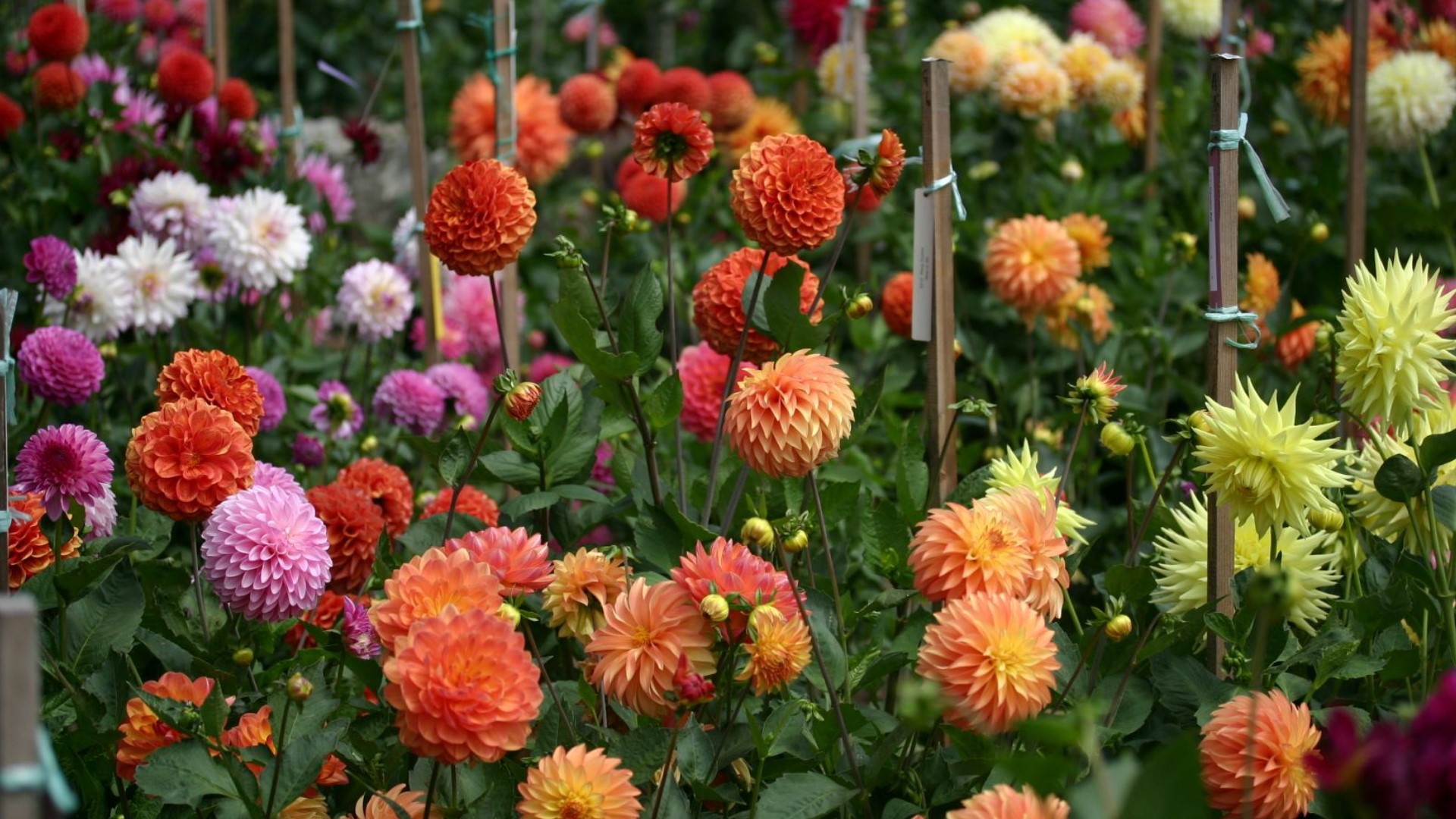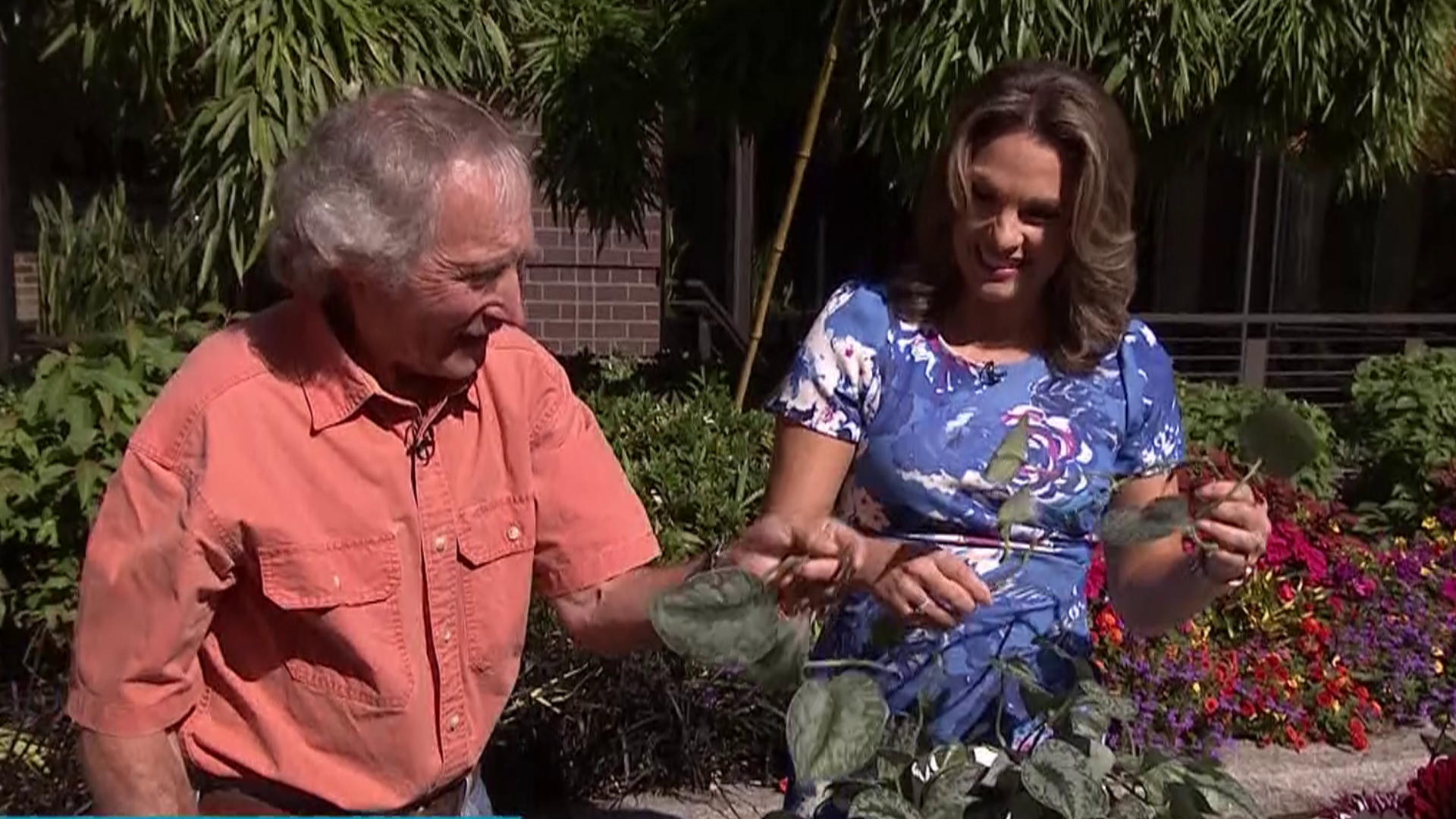SEATTLE — Dahlias are blooming everywhere in the Pacific Northwest right now. Gardening Guru Ciscoe Morris loves dahlias. The gorgeous flower is also the subject of many of the questions he gets asked. Whatever you do, he says, keep the earwigs away!
Here's more on Dahlias from Ciscoe himself:
A bouquet a day keeps the marriage counselor away.
Few perennials can match dahlias when it comes to producing non-stop flowers. Their gorgeous blooms add beauty to any area of the garden, and if you get in half the trouble I do (how did I fail to notice those sheets drying on the clothesline when I turned on that sprinkler?) you’ll appreciate having the long-lasting cut flowers for use in bouquets. The blooms come in almost every color imaginable with sizes varying from golf ball to dinner plate. Most local nurseries carry a great section of potted, ready to plant specimens. Keep an eye out for the rarer varieties with red or purple leaves. They’re exceptionally attractive with masses of colorful flowers that contrast beautifully with the wine-colored foliage. Plant your Dahlia in as much sun as possible in well-drained soil. To keep them blooming non-stop, keep the root zone well mulched and water regularly. Fertilize every 6 weeks by scratching a mixture of alfalfa meal and organic flower food into the soil around the root zone, and remove spent flowers regularly.
Dahlias are generally pest-free (deer don’t eat them) but their one nemesis is earwigs. If they build up to sufficient numbers, they eat the petals right off during the night leaving the blooms looking like Mariners' baseballs. Fortunately, these critters are fairly easy to lure into a trap if you know the trick. Make the 'Ciscoe earwig trap' by cutting off the top of an empty plastic water bottle where it begins to narrow at the neck. Then drop a blop (teaspoon) of the secret ingredient, canned tuna fish cat food, into the bottle. Invert the bottleneck you cut off, and stick it inside the top of the bottle pointing down like a funnel. Use scotch tape to secure the bottleneck in the top. Stick a safety pin in each side and tie yarn to the pins to allow you to hang a few traps in each plant that's under attack. Canned fish-flavored cat food has the same effect on earwigs that brussels sprouts casseroles have on me. It drives them crazy with desire. The little devils can't resist the midnight snack and will enter the trap, only to discover they can't find their way back out the next morning. Dump the earwigs into soapy water, or since they’re somewhat beneficial (they eat harmful insects) release them somewhere far from any Dahlias. Don’t leave the traps hanging for too long. They can get a bit pungent, and you'll be amazed at how many new kitty friends you’ll have visiting your garden.
Most people dig and store their Dahlias tubers in winter, but I leave mine in the ground. After the foliage dies back in fall, cut the stems to the ground and mulch over the roots with a thick cover of evergreen fern fronds. The fronds are great insulators and they repel water, preventing the tubers from rotting in our cold rainy winters. Although I've lost a few in excessively cold winters, most survive to produce beautifully the following year. If over time, however, your Dalila begins losing vigor and produces fewer flowers, it’s a sure sign the tuberous roots are overcrowded and need dividing. Dig up the rootstock in fall after the leaves and stems turn black. Tap off the soil and dry the clumps in a frost-free area for at least three days before beginning the dividing process. First, discard any rotten or shriveled tubers. Next, divide the rootstock, either into individual tubers or into chunks containing a few tubers. Make sure that the tubers in the division are attached to a stem from the previous year, as those are the only ones that will produce growth the following spring. Wrap the divisions in several layers of newspaper and place them in open paper bags or cardboard boxes and store them in your unheated garage. Check the divisions now and then and if any tubers are shriveling, spritz them with water from a spray bottle. If any long stems emerge from the tubers in storage, snap them off right before replanting in early May. Then relax. You’ll have more than enough flowers for spectacular bouquets to make up for all of the trouble you’re undoubtedly going to get into next summer.
PLUS: Ciscoe teaches us how to give our plants a trim! — Plants need haircuts too! See how Ciscoe spruces up New Day's resident plant, Geroge.
Segment Producer Suzie Wiley. Watch New Day Northwest 11 AM weekdays on KING 5 and streaming live on KING5.com. Contact New Day.


